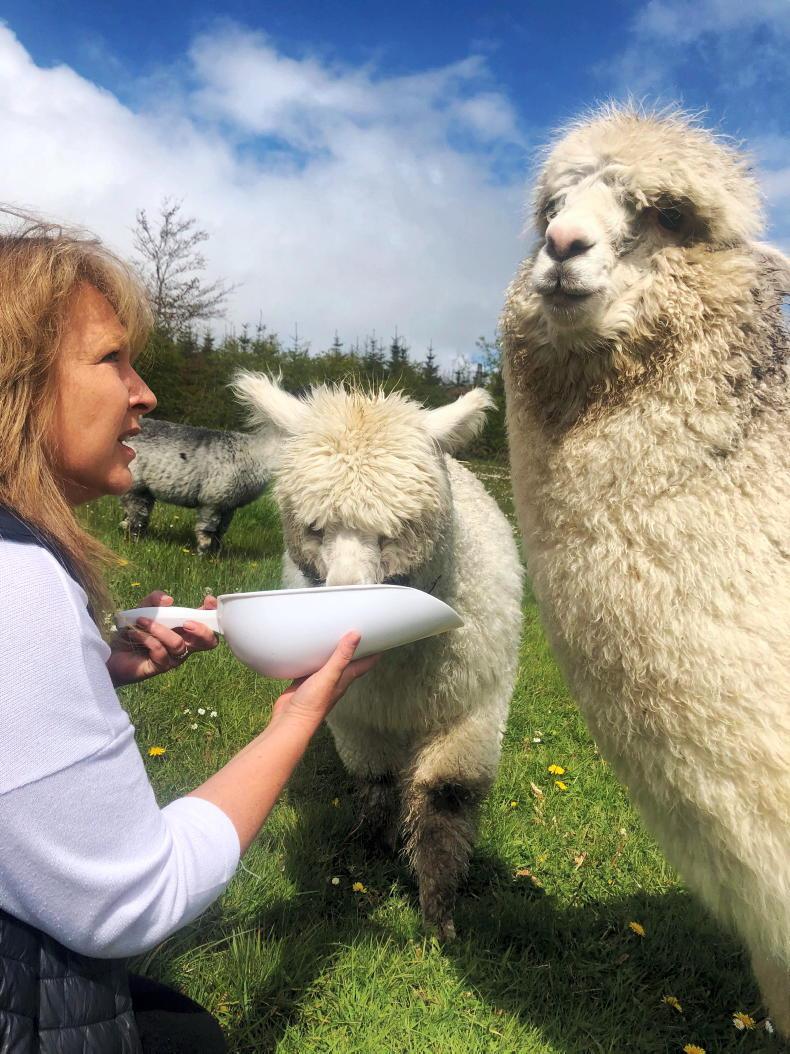There are just over 30ac here in Brittas, Co Dublin. My husband Seán’s parents bought this land after their home farm in Kilnamangh, Co Dublin had been CPOed (compulsory purchase order) by the Government. After Seán’s dad passed away a few years ago, he started running the farm.
We’ve always had cattle and Seán has a real passion for horses - he breeds and sells them, with some going to Switzerland and others to England. I’ve been married to Seán for 25 years, so for 25 years I’ve been on this farm. I have a real love for the outdoors. It’s me who grows the garden and manages the veggies, it always has been.
I have a background in finance. I was working for multinationals as operations and finance director, that was me up until a couple of years ago. I then began a new tack in my career working for the then Minster of Children Katherine Zappone for four years up until the end of July last year. I should go looking for another job, but I’m just really enjoying the time off for the minute.

The interest in alpacas probably started about five to six years ago. I was literally thinking of getting turkeys and if anyone knows anything about alpacas or llamas, they’re great guard animals. I didn’t get the turkeys that year and slowly fell in love with the alpacas. I thought there was enough in minding them without the added work with turkeys, so I decided, no, alpacas were for me. On the farm, there’s a real mix now.
I started the herd having researched it around Ireland. I decided Co Tyrone was where I was going to go. Clogher is home to Amberly Alpacas, run by Roger Clarke - he is without a doubt the expert in Ireland.
Because they’re an expensive animal I thought I would try and do something different, to breed a high pedigree herd, which would mean the selling on of cria (their progeny) as well as them being good solid and well-built animals that have a good quality fleece.
Unique selling point
Their fleece is softer than cashmere, it’s hypoallergenic – there’s no lanolin, nothing in their fleece that you can be allergic to – so that’s what I’m thinking of doing with their fleece, pillows and quilts, I think I’ll go down that path.
If you are asthmatic or have any kind of respiratory problems at all, theirs is the product. It’s a great product, as a lot of people are allergic to wool or goose feathers and different things like that [are used] for bedding, whereas theirs isn’t.

Because of the density and the type of wool the way that the fibre is hollow it’s twice as warm with half the depth so you don’t need a big quilt. I’m only starting at the product end of it now.
There are 100 owners in Ireland now and without a doubt there is money to be made in alpacas. They live 20 or so years and they can breed right up till the end. So if you’re going to breed, it is great to have an animal that has that length of fertility, their fleece that is shorn once a year is also worth money. So you have two incomes there.
Learning as we go
I’ve had alpacas coming up on three years in August. It’s a real learning curve. After going through full cycles now, I’ve learnt so much. You buy the books and think that’s everything, and the fact you don’t have vets with lots of knowledge on them, they are learning with you too. You have the Alpaca Association of Ireland now, which is great that you can put out questions and ring members, everyone is really good to each other. As a whole it’s about learning.
My alpacas are all very individual, each with their own personality, which is lovely, but they’re also a very easy animal to manage.

Sage advice
My advice would be to get to 10 females and gradually build from there. Alpacas are pregnant for 11 and a half months, where they can go two weeks overdue, so that’s a year. It’s a slow process building up a herd and alpacas are expensive, you’re talking the price of a horse really. So you can’t really go out and buy 10-15 alpacas, you’d have to have won the Lotto or something like that. So you start that way – small – and just build up by breeding them every year. Having originally bought three alpacas, I am now up to five in my herd with another cria due in July. All we can do is wait.

Ruth’s advice for keeping alpacas:
